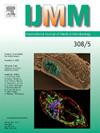Comparison of clinical metagenomics with 16S rDNA Sanger sequencing for the bacteriological diagnosis of culture-negative samples
IF 3.6
3区 医学
Q1 MICROBIOLOGY
引用次数: 0
Abstract
Background
Currently, diagnosis of bacterial infections is based on culture, possibly followed by the amplification and sequencing (Sanger method) of the 16S rDNA - encoding gene when cultures are negative. Clinical metagenomics (CMg), i.e. the sequencing of a sample’s entire nucleic acids, may allow for the identification of bacteria not detected by conventional methods. Here, we tested the performance of CMg compared to 16S rDNA sequencing (Sanger) in 50 patients with suspected bacterial infection but negative cultures.
Methods
This is a prospective cohort study. Fifty patients (73 samples) with negative culture and a 16S rDNA sequencing demand (Sanger) were recruited from two sites. On the same samples, CMg (Illumina NextSeq) was also performed and compared to 16S rDNA Sanger sequencing. Bacteria were identified using MetaPhlAn4.
Results
Among the 73 samples, 20 (27 %, 17 patients) had a clinically relevant 16S rDNA Sanger sequencing result (used for patient management) while 11 (15 %, 9 patients) were considered contaminants. At the patient level, the sensitivity of CMg was 70 % (12/17) compared to 16S rDNA. In samples negative for 16S rDNA Sanger sequencing (n = 53), CMg identified clinically-relevant bacteria in 10 samples (19 %, 10 patients) with 14 additional bacteria.
Conclusions
CMg was not 100 % sensitive when compared to 16S, supporting that it may not be a suitable replacement. However, CMg did find additional bacteria in samples negative for 16S rDNA Sanger. CMg could therefore be positioned as a complementary to 16S rDNA Sanger sequencing.
临床宏基因组学与16S rDNA Sanger测序在培养阴性样品细菌学诊断中的比较
目前,细菌感染的诊断是基于培养,可能在培养阴性时进行16S rDNA编码基因的扩增和测序(Sanger法)。临床宏基因组学(CMg),即对样品的整个核酸进行测序,可能允许鉴定传统方法无法检测到的细菌。在这里,我们在50例疑似细菌感染但培养阴性的患者中测试了CMg与16S rDNA测序(Sanger)的性能。方法前瞻性队列研究。从两个地点招募了50例(73份样本)阴性培养和16S rDNA测序要求(Sanger)。在相同的样品上,也进行了CMg (Illumina NextSeq)测序,并与16S rDNA Sanger测序进行了比较。使用MetaPhlAn4对细菌进行鉴定。结果在73份样本中,20份(27 %,17例患者)具有临床相关的16S rDNA Sanger测序结果(用于患者管理),11份(15 %,9例患者)被认为是污染物。在患者水平上,与16S rDNA相比,CMg的敏感性为70 %(12/17)。在16S rDNA Sanger测序阴性的样本中(n = 53),CMg在10个样本(19 %,10例患者)中鉴定出临床相关细菌,另外还有14个细菌。结论scmg对16S的敏感性达不到100% %,不适合作为替代品。然而,CMg确实在16S rDNA Sanger阴性的样本中发现了额外的细菌。因此,CMg可以定位为16S rDNA Sanger测序的补充。
本文章由计算机程序翻译,如有差异,请以英文原文为准。
求助全文
约1分钟内获得全文
求助全文
来源期刊
CiteScore
9.70
自引率
0.00%
发文量
18
审稿时长
45 days
期刊介绍:
Pathogen genome sequencing projects have provided a wealth of data that need to be set in context to pathogenicity and the outcome of infections. In addition, the interplay between a pathogen and its host cell has become increasingly important to understand and interfere with diseases caused by microbial pathogens. IJMM meets these needs by focussing on genome and proteome analyses, studies dealing with the molecular mechanisms of pathogenicity and the evolution of pathogenic agents, the interactions between pathogens and host cells ("cellular microbiology"), and molecular epidemiology. To help the reader keeping up with the rapidly evolving new findings in the field of medical microbiology, IJMM publishes original articles, case studies and topical, state-of-the-art mini-reviews in a well balanced fashion. All articles are strictly peer-reviewed. Important topics are reinforced by 2 special issues per year dedicated to a particular theme. Finally, at irregular intervals, current opinions on recent or future developments in medical microbiology are presented in an editorial section.

 求助内容:
求助内容: 应助结果提醒方式:
应助结果提醒方式:


